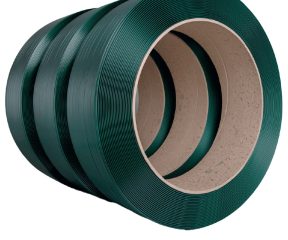
Introduction
Packaging straps are essential for any industry that requires the secure packaging of products for transport or storage. They are made of different materials, such as polyethylene terephthalate, polypropylene, and steel, and come in different types and sizes to meet specific packaging needs. In this article, we will discuss the different types of packaging straps, their applications, benefits, and the importance of selecting the right packaging straps for your specific needs.
Types of Packaging Straps
Packaging straps come in different types, each with its pros and cons. The most common packaging straps types include:
- PP Straps
- PET Straps
- Metal or Steel Straps
The most common types of packaging straps are polyester, polypropylene, and steel. Polyester straps are durable and resistant to weather and chemicals, making them ideal for outdoor applications. Polypropylene straps are lightweight and cost-effective, making them a popular choice for the packaging of consumer goods. Steel straps are strong and can withstand high tension, making them suitable for heavy-duty applications. It is essential to choose the right type of strap for the specific application to ensure maximum effectiveness.
Applications of Packaging Straps
Packaging straps are used in various industries, such as lumber, construction materials, and consumer goods, to secure products during transportation and storage. The packaging straps are ideal for packaging products such as pallets, boxes, and equipment. The use of packaging straps provides an efficient and cost-effective solution for securing products during transportation and storage.
Benefits of Packaging Straps
Using packaging straps provides many benefits, including security, durability, and cost-effectiveness. The use of packaging straps helps prevent damage to products during transportation and storage, saving companies money in the long run. Additionally, some packaging straps are reusable, making them a sustainable option for companies that seek to reduce their environmental impact. The use of packaging straps also helps improve efficiency in packaging and transportation, reducing the time and effort required to secure products.
Choosing the Right Packaging Straps
When selecting packaging straps, it is essential to consider several factors, such as the weight of the products being packaged, the transportation method, and the environment. The type of packaging strap used should match the product being packaged, the transportation method, and the environmental conditions to ensure maximum effectiveness. Selecting the appropriate packaging strap helps prevent damage to products and ensures that they arrive at their destination safely.
Using Packaging Straps Effectively
To ensure maximum effectiveness, packaging straps should be used correctly. This includes following the manufacturer’s instructions and using the appropriate tension level to secure the product. Common mistakes to avoid when using packaging straps include over-tensioning or under-tensioning the strap, using the wrong type of strap, and not properly storing and handling the straps.
Maintenance and Care of Packaging Straps
To ensure the longevity and effectiveness of packaging straps, it is essential to care for and maintain them properly. This includes storing the straps in a dry and cool environment, avoiding exposure to direct sunlight, and inspecting them regularly for signs of wear and tear. It is also important to handle the straps carefully and avoid dragging them on rough surfaces or exposing them to sharp edges.
Regulations and Standards for Packaging Straps
Packaging straps must meet specific regulations and standards, such as those set by ASTM International and the International Organization for Standardization (ISO). These regulations ensure that packaging straps meet certain quality and safety requirements to protect the products being transported and the people handling them. Failure to meet these standards can result in damaged goods, lost revenue, and even legal consequences.
ASTM International is an organization that develops and publishes technical standards for a wide range of materials, products, systems, and services. They have developed standards for packaging materials, including packaging straps, to ensure they meet the necessary strength and durability requirements.
The ISO is an international standard-setting body that develops and publishes standards for a wide variety of industries. They have developed standards for packaging straps to ensure they are of high quality and meet safety requirements.
When selecting packaging straps, it is important to choose straps that meet these regulations and standards. This ensures that the straps will perform as intended and provide the necessary protection to the products being transported.
Trends in Packaging Straps
The packaging straps industry is constantly evolving, with new trends emerging every year. One of the biggest trends in recent years is the use of eco-friendly materials. Many companies are now opting for packaging straps made from materials such as recycled polyester or biodegradable materials to reduce their carbon footprint.
Another trend is the use of automation in strap manufacturing. Automated equipment can produce packaging straps faster and more efficiently, leading to increased production and cost savings.
Advancements in technology are also leading to the development of stronger and more durable packaging straps. New materials and manufacturing processes are being developed to create straps that can withstand heavier loads and harsher environments.
Conclusion
Packaging straps are an essential component of the packaging industry, providing security, durability, and cost-effectiveness to a wide range of applications. There are different types of packaging straps available, each with its own set of pros and cons.
Choosing the right packaging straps is crucial for ensuring the safe transportation of products, and there are various factors to consider when making this decision. Proper use and maintenance of packaging straps is also important to ensure their longevity and effectiveness.
Regulations and standards have been put in place to ensure the quality and safety of packaging straps, and it is important to choose straps that meet these standards.
As the packaging straps industry continues to evolve, it is important to stay up to date with the latest trends and advancements. By doing so, companies can ensure they are using the best possible packaging straps for their needs, while also contributing to a more sustainable future.


